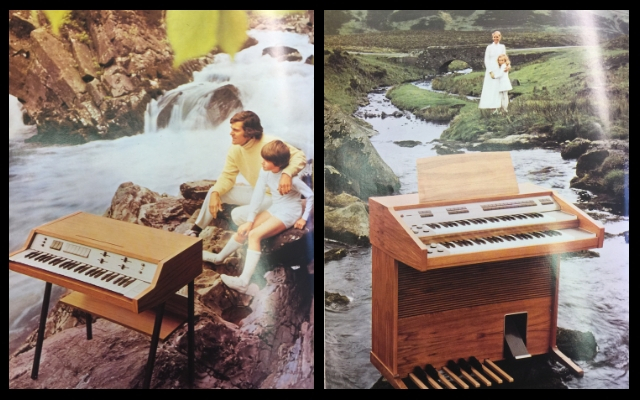I am sure we all have stories of strange and unusual items we have seen in the organ lofts we visit. Perhaps you will be able to add to these stories for me?
I will always remember the loft at St Johns College Cambridge where on reaching the top step I bent down to pick up a 50 pence coin only to find that it was glued down hard to the stone. Nice student prank! This was quickly followed by finding a pair of boxing gloves near the keyboards there. What on earth were they needed for? Admittedly the action was a bit heavy when coupled but even so!
Later that same visit as I played Tuba Tune by Porter Brown Christopher Robinson (the then director of music) popped into view at the top of the loft stairs. Perplexed I would say does not get close to describing the look on his face. He said not a word and disappeared as fast as he had appeared. Perhaps after all I was that musician for whom the gloves were specifically provided or worse, he thought I was actually wearing them.
Anyway that is my first memory of loft oddities and in part inspires this blog which I hope we can add to over the coming years. I was very impressed last year at Canterbury Cathedral to find 2 very comfortable leather upholstered arm chairs behind the console. Presumably there can be long intervals there when organist and his assistant can take a comfortable seat. I do not recall a kettle but perhaps that was hidden away in a cupboard.
What we found in the organ loft
This blog though focuses on some material my colleague Jeremy brought back from a church in Kent. We unearthed a folder of organ sales material dating from 1973/4 when presumably the organ we were replacing was chosen by the church concerned. It is so interesting from many standpoints that I want to share it with you.
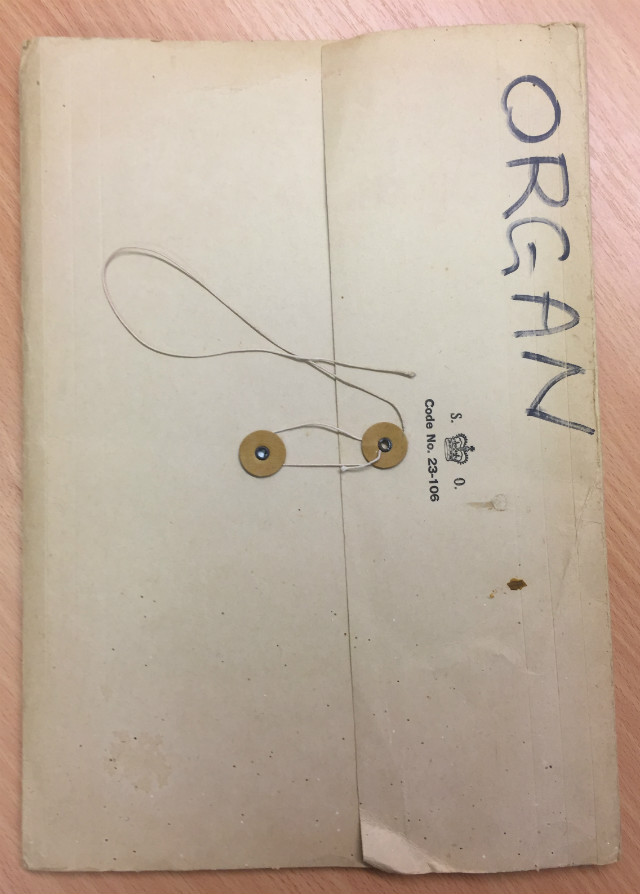
You will see that the folder containing the brochures is of the same period. When did you last see a folder closed by a string seal? It bears a crown crest so I suspect it was ‘borrowed’ from some government department.
Then there is the matter of pricing which in 1974 seems astoundingly expensive. I have adjusted them by the Retail Price Index to current day levels and you will see that digital instruments today are for the most part significantly less expensive in real terms, a factor common with most electrical consumer goods. Save for the Phillips instruments which were very competitively priced at the time.
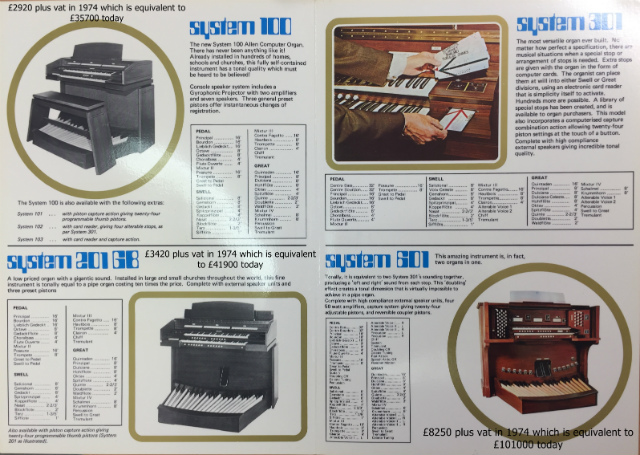
Phillips was undoubtedly the largest company of those represented in this sample at the time and it is interesting to look at their marketing approach for albeit the rather different home entertainment sector. This is clearly ‘life style’ promotion. Who of us has ever seen an organ in a mountain stream or any other wide open outdoor space for that matter. The manufacturer is using the setting to appeal to us, presumably as the sound was never going to capture our imagination.
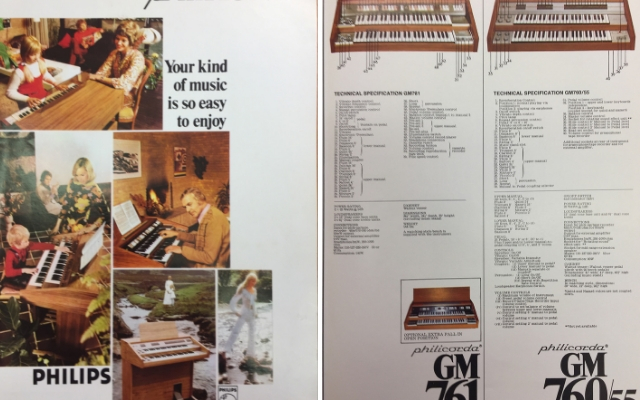
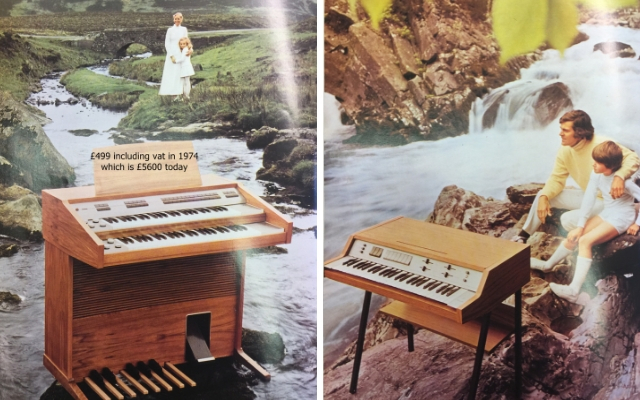
The Allen brochure too uses a font that alludes to the scientific space age that we were then living through. TV programmes like ‘Tomorrows World’ were expert at educating us to the exciting new gadgets and devices that would soon be common place and change all our lives for the better. Perhaps they even featured a ‘computer organ’ but I have no particular recollection of this. The brochure headlines with ‘an astounding new development in organs’ and indeed it was.
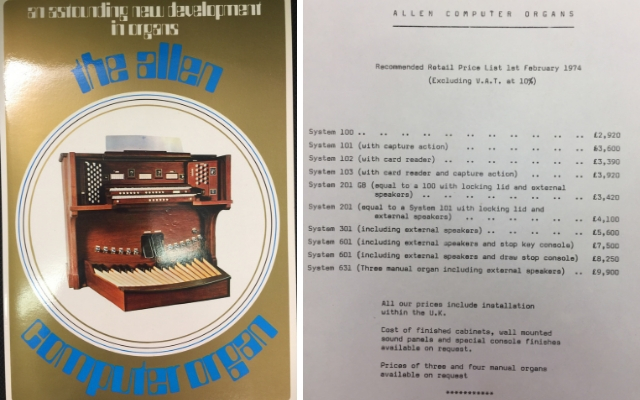
Look too at the pictures of the Compton-Edwards factory. I can count 35 consoles in the picture and 36 people in the 2 pictures. Are there 36 people today working in the entire digital organ industry in the UK? I rather doubt it.
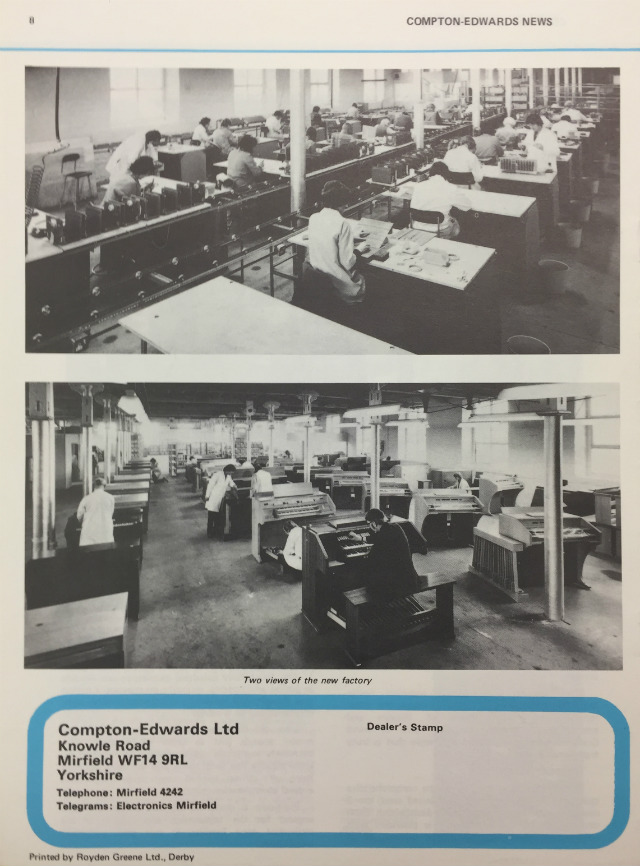
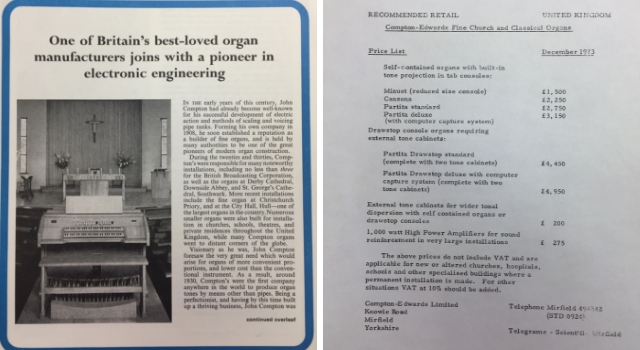
We tend to think that digital church organs have only recently from some people’s perspective begun to displace pipe organs at an alarming rate. I have never seen an old Compton-Edwards instrument and to my knowledge we have never replaced one. I wonder where they all went? Perhaps they only lasted a few years and are the culprit for the legacy impression that pipe organs last a lifetime while digital organs last 10 years if you are lucky.
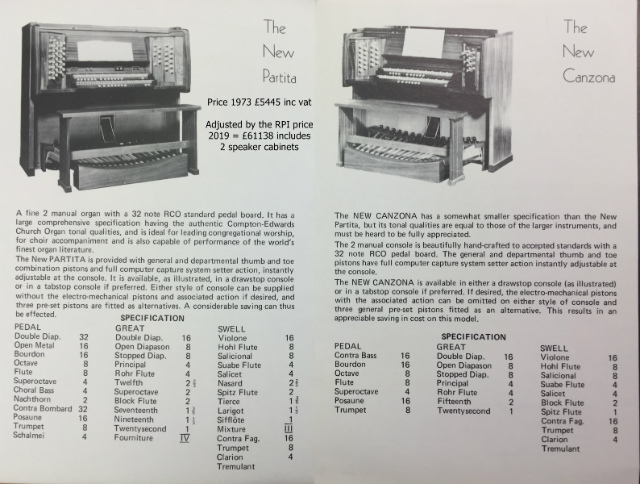
This lucky find has provided some interesting historic information and introduced me to a substantial company I had never heard of. The 1970’s an era of Mungo Jerry and flared trousers. Happy days long now gone.
I have had a passion for church organs since the tender age of 12. I own and run Viscount Organs with a close attention to the detail that musicians appreciate; and a clear understanding of the benefits of digital technology and keeping to the traditional and emotional elements of organ playing.
